LeapFrog: 12 tips for India to seize the digital entrepreneurship opportunity
Three waves of digital innovation have swept across India over the past decades: the software services boom of the 1980s, the DotCom boom of the late 1990s, and the more recent wave powered by SMAC technologies (social, mobile, analytics, cloud).
All three waves are overlapping now to present a tantalising opportunity for India to leapfrog its seemingly intractable problems, thanks to the potent force of entrepreneurship. TiE Bangalore brought together three generations of entrepreneurs for LeapFrog, an unprecedented day of grasping these megatrends and visioning NextGen breakthrough opportunities.
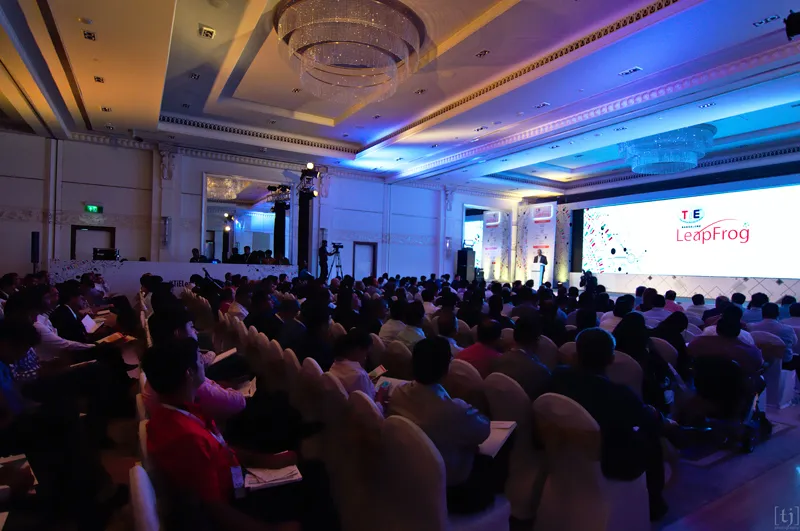
Framing exercises, inspiring conversations, rapid-fire interviews and sectoral deep-dives offered a range of insights for Indian innovators and investors. The Ernst&Young report ‘Megatrends 2015’ was also issued, which identified the rise of high-impact entrepreneurship as a global megatrend. Other trends are the rise of Asia as a knowledge hub, globalisation of trade, digital disruption, urbanisation, resource competition, and data-driven personalised healthcare.
Here are my Top 12 takeaways and tips from LeapFrog 2015 for startups and society at large, on how they can transform the country not just within their lifetimes but within the decade.
- The new India advantage: scale and speed
India has now reached the ranks of countries like the US and China where there are digital markets of the order of hundreds of millions, said Paytm Founder Vijay Shekhar Sharma. “India is big enough now for entrepreneurs and investors to explore and exploit,” added Diego Piacentini, Senior Vice President, International at Amazon.com. (See also my review of the BCG-IAMAI 2015 Report and takeaways from the India Digital Summit.)
Consumer adoption of digital technologies seems to have taken off a bit later than other societies, but has suddenly exploded in a spike-like manner. The founders of FlipKart and Ola Cabs both said they were surprised how quickly consumers have taken to e-commerce and apps for taxis, respectively.
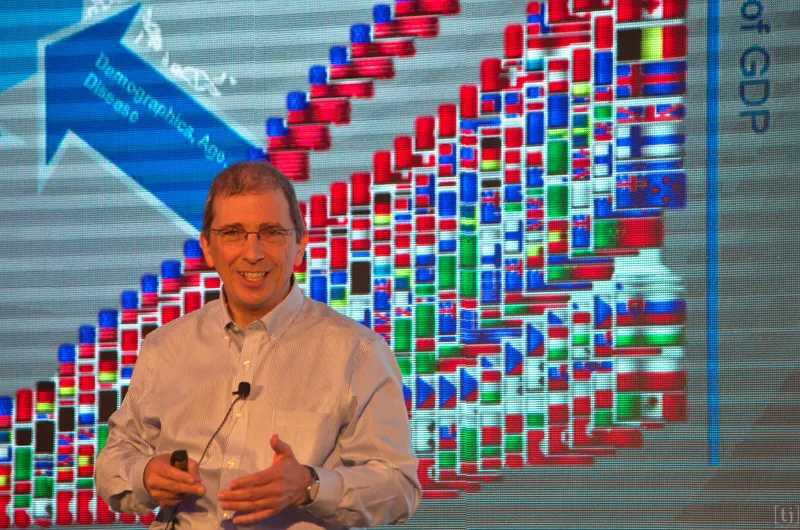
“Technology has a multiplier effect for solving social problems,” said Tarun Khanna, Harvard Professor and Chairman, Expert Committee on Innovation and Entrepreneurship, Govt of India. For example, proper talent allocation helps meet many of the aspirations in emerging economies, he said, citing the example of one of his startups, Aspiring Minds, which offers tests and analytics for jobseekers.
The first IT boom in India solved the problems of foreign companies, whereas the current startup boom is solving India’s problems, noted Mohandas Pai, Chairman, Manipal Global Education. There should be 100,000 startups in India in the next 10 years, he added.
“Stop saying that we are creating India’s version of an American product or service – we are innovating today in completely new ways,” said Nandan Nilekani, Co-founder of Infosys and Founding Chairman of Aadhaar.
- Money talks
“India is now experiencing a ‘WhatsApp’ moment in financial services,” observed Nandan Nilekani. Just as WhatsApp disrupted the messaging space from 2009 onwards, digital innovation is changing the payment and banking space in India.
“India is more ‘mobilised’ in ecommerce than any other country – 41% of total ecommerce transactions are on mobiles. The move to ‘less cash’ has already started,” said Nilekani. In just a few years, electronic clearing has caught up with paper-based cheques.
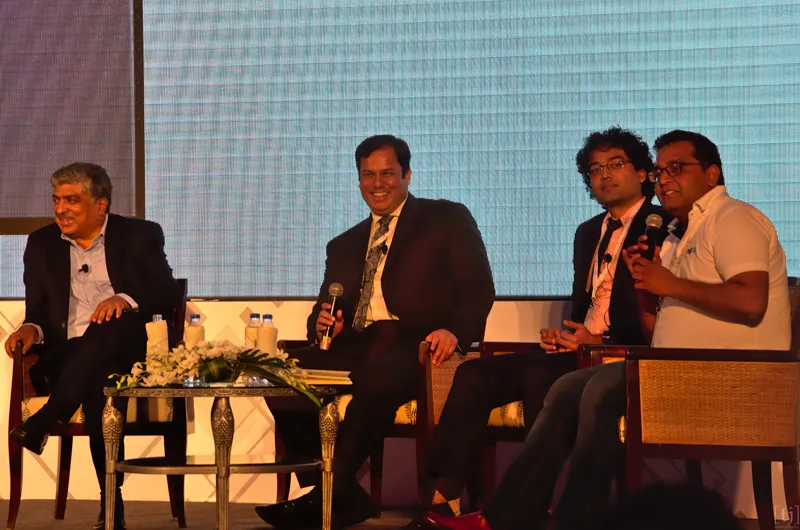
IMPS (Immediate Payment Service) was launched in 2011, and surpassed the volumes of India Post’s Money Order Service (which has launched in 1880 and discontinued in April 2015). IMPS will soon overtake credit cards and debit cards. Paytm (launched in 2010) is already doing more purchase transaction volumes than any Indian bank (though the cash value may be less).
E-commerce in India will grow by four times in volume in the next five years. “India has 900 million mobile users who do an average recharge of Rs 25 each month. LPG accounts for three million transactions a day, reaching over 120 million families. The government has announced 11 new licenses for payment banks, and Aadhar and e-payment will together transform this space, said Nilekani. By March 2016 there will be one billion Indians with Aadhar registration.
“The wet signature is disappearing, and digital signatures are on the rise,” added Adhil Shetty, Founder and CEO, Bankbazaar.com. Smartphones and portals help comparison shopping between banks at any time and any place, and millions of Indians are becoming comfortable with e-finance. “Qualitatively and quantitatively, online interactions improve upon the paper experience,” said Shetty.
“The smartphone will be your new identity card. Biometric smartphones enable one-click two-factor authentication, and this combines security with convenience,” said Nilekani. “The only scaleable infrastructure for payments is the smartphone – more than ATMs and POS machines,” he added. RBI estimates that in 2020, India will have 150,000 bank branches, 270,000 ATMs, 1.5 million POS machines, and 15 million retail outlets – all of which will be outstripped by the mobile boom.
“Mobile is the game, and not just a new strategy,” said Vijay Shekhar Sharma, founder of Paytm; the company expects to have 500 million users by 2020. (See also my review of ‘The Power of Mobile Banking’ by Sankar Krishnan.)

Another regulatory innovation from National Payments Corporation of India is the Unified Payments Interface which will enable peer to peer payments. Inter-operability between mobile wallets lays the foundation for P2P payments. In sum, the rapid enablement of paperless, cashless and even presence-less service delivery will transform financial services and bring millions into the formal economy.
- Retail transformation
In e-retail, the promise is wide selection, low price and fast delivery, with a blend of online and offline strategies – and the e-commerce wave has spread to small town and rural India as well. “India is Amazon’s top investment destination today,” said Diego Piacentini of Amazon.com.
The big trend is machine learning and application of artificial intelligence in shopping tools as well as fraud detection, said Sachin Bansal, Co-Founder of Flipkart. “Indian consumers have been more receptive to e-commerce than we thought. Lots of leapfrogging is happening here,” he said. (See also my reviews of earlier TiE events on e-commerce and mobile here.)
- Health is wealth
“India needs to urgently leapfrog in healthcare – using Western models only do not scale, and are too expensive,” said David Lawrence, Former, Chairman of the Board and CEO, Kaiser Permanente Healthcare. “However, healthcare is a long, slow, hard, slog with no quick fixes or returns. You need “patient” money, literally,” he said.
As compared to medical care, the leapfrog opportunity is in India’s healthcare sector, due to its trends like vast and growing population, urbanisation and the youth boom. Tech innovations can help reduce the number of doctor visits, medical costs in triage, rehabilitation, disease support, and screening. Technologies to watch include miniaturisation (eg. chip on a pill), bio-sensing, Big Data and smart algorithms. Other techniques like gamification for behaviour change can also be used here.
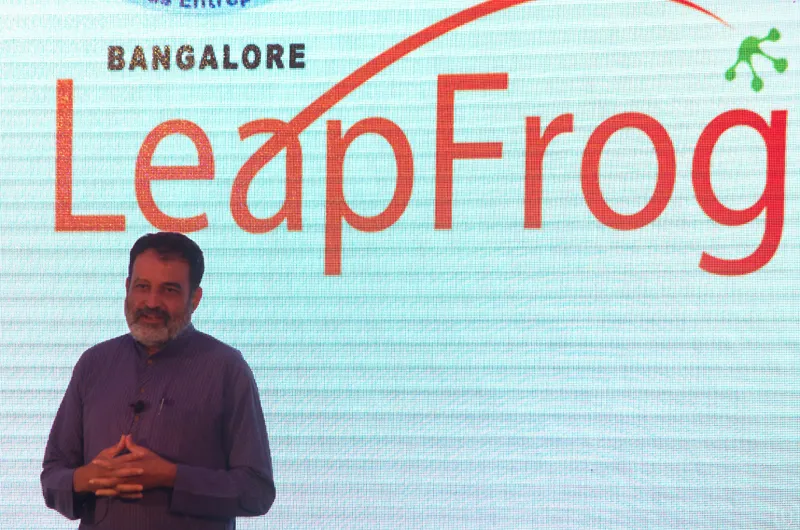
Countries to watch in this space include South Korea, which has started a National Institute for Innovation in Healthcare Delivery, along with an innovation fund and a pool of private investors.
India’s opportunities in this space include new diagnostic technologies, large number of patients for clinical trials, large numbers of scientists to curate data, and solutions for data challenges, advised Thomas Miller, Partner, Grey Bird Ventures; Former CEO, Siemens Medical and Siemens AG.
“India will be home to 100 million diabetics. 50% of patients admitted to hospitals have chronic diseases,” said Vishal Bali, Co-Founder and Chairman Medwell Ventures. The Indian government’s spend on healthcare is only 1.2% of GDP and more private sector involvement and technology interventions are needed. Digital innovation offers a huge opportunity in personalisation of healthcare services, but startups rushing into this space should not sacrifice scientific rigour and professional reputation, he cautioned. “World-class innovations in healthcare are coming out of India, especially in Bangalore,” Bali added.
- Unrelenting innovation and growth
“Entrepreneurship is not for the faint of heart – you have to drive yourself to be the best every single day,” said Doreen Lorenzo, former President of Frog Design and Quirky. “An innovator creates trends, and doesn’t just follow trends,” she said.
“You have to innovate continuously to succeed in the market,” concurred Bhavish Aggarwal of Ola Cabs. (See also my reviews of the related books ‘Unrelenting Innovation’ by Gerald Tellis, ‘Eight Steps to Innovation’ by Vinay Dabholkar and Rishikesha Krishnan, and ‘The Road to Reinvention’ by Josh Linkner.)
“The challenge for companies and entrepreneurs is how to keep innovating and not stop,” said Diego Piacentini of Amazon.com. Lessons learnt from its China experience include the need to focus on fast growth and invest in customer experience – hence the focus on TV and outdoor ads, which are now clearly evident across Indian cities.
“Amazon is a large corporation as well as an entrepreneur,” said Paicentini. “We keep innovating – we have set up a warehouse in Manhattan to deliver books within one hour,” he cited as an example. “India is a complicated country, but I am Italian, I am used to handling complications!” he joked.
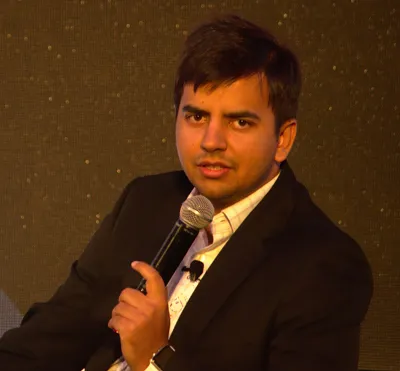
Innovation applies not just to one sector but a broader network of systems. “You make money from an entire ecosystem, not just one line of business,” said Paicentini. New marketing techniques will be needed for rural India as well. “There is huge scope in rural India. We are teaching rural retailers how to sell online and are using tea-carts for demos,” he explained.
- Lead with empathy
Leadership is about theory of mind, with a blend of emotional intelligence and empathy, said Doreen Lorenzo, formerly with Frog Design and Quirky. In the rush towards technology and data, it is important to focus on why and how this will impact people’s lives, through techniques like storytelling (see my book review of ‘Whoever Tells the Best Story Wins’ by Annette Simmons). “The importance of Big Data is to learn how to make it small enough for people to understand and act on,” she said.
Empathy is key for organisations who want to leapfrog via innovation and customer connect. Such approaches are important in companies like Apple which have highlighted the importance of design in technology. “Design thinking is your ability to solve a problem without knowing what the answer could be,” said Lorenzo. (See also my article on ‘The ‘8 Is’ of design thinking for startups.’)
Command and control approaches to leadership are now being transformed into leading via collaboration and empathy. Lorenzo explained that the old view of failure is “If you fail, you are fired, you are a failure” – the new view is “What did you learn and what can you share?” Unfortunately, many companies still think empathy is a “fuzzy thing” or a “woman thing.”
Lack of empathy can reduce productivity, drop innovation and increase attrition. Lack of empathy leads to lack of power in the long run, she warned. Companies like Ola Cabs have a sense of commitment and empathy and offer community services for the drivers, said Co-Founder Bhavish Aggarwal.
- It helps to be an outsider
Many disruptive ideas for innovation actually come from outsiders, and not from incumbents. “I only knew how to code, I knew nothing about transportation! I don’t even own a car,” said Bhavish Aggarwal, who co-founded Ola Cabs. “My father did not speak to me for six months when I left Microsoft to start Ola Cabs,” he joked.
“I was so naïve early on that when an angel investor asked about org structure I had to Google it to find out! It’s OK to be naïve when you are a young entrepreneur, just do it!” advised Aggarwal. It was his insights into mobile as a tool for utilitarian needs that allowed him to break into the taxi sector.
- Form alliances and bridges
India needs to build bridges between startups, corporates and governments to accelerate the benefits of entrepreneurship and generate more leapfrog effects, said Anand Sudarshan, Founder of Sylvant Advisors. “We need a good policy foundation for the future,” he said. The calls for government support for entrepreneurship these days are in stark contrast to the ‘benign neglect’ of government during the earlier software boom in the 1980s.
While a lot of process, service and product innovation is happening in India, there are still gaps in core technology innovation. One problem here is the siloed and segmented structure of Indian higher education, with separate colleges and universities for technology, medicine, arts and so on – in contrast with integrated universities in the West. Many Indian institutions are also seen as elite, with their academics preferring to be in their ivory towers. Fortunately, signs of change are here, with trends such as the Indian Institute of Science opening its campus to the InnoFest innovation festival (see my earlier photo essay: ‘Startups and ministers at Innofest 2015’).
- Gamification and incentives
“Changing the world in a short span of time requires real breakthroughs. This can be done by framing problems in the form of challenges, with prizes to solve them,” said Zenia Tata, Executive Director for Global Development, XPrize Foundation.
Key incentives to motivate people for breakthrough innovation include money, the chance to be the first to invent something, and the opportunity to make a difference to the world. Examples of such incentives includes Napoleon Bonaparte’s prize for food preservation techniques (which led to the canning industry), the British Navy’s Longitude prize for sea navigation (won by clockmaker John Harrison), and the Orteig Prize for aviators to cross the Atlantic Ocean (won by Charles Lindberg).
More recently, the high-profile XPrize has been launched to spur innovation in education, genomics, learning, and even moon travel. Similar prizes can be launched to solve India’s seemingly intractable challenges, and the XPrize is aiming to tackle problems of water, waste, energy and women’s safety.
“The day before something is a breakthrough, it is still a crazy idea,” said Tata, citing Peter Diamandis, XPrize Founder. At the TiE Leapfrog conference, Tata also organised a workshop on Science Fiction Prototyping to help envision the future in a fun manner, while also unearthing assumptions about today’s world and what can be done to advance the current state. “Science fiction exercises help us revisit what it means to be human. Startups can use this to envision the future,” said Tata.
Other examples include the ‘Reinvent the Toilet Challenge’ run by the Bill and Melinda Gates Foundation, in association with the Department of Biotechnology of India; two startups were among the six organisations that received the grant.

- Macro-frameworks: attitudinal change
While funding startups can be done relatively quickly, the hard slog is in improving Indian society’s attitudes toward entrepreneurship, said Tarun Khanna, Harvard Professor and Chairman, Expert Committee on Innovation and Entrepreneurship, Govt of India.
The Indian government’s Atal Innovation Mission (AIM) has represented entrepreneurship initiatives in India in the form of a three-layer pyramid, with culture and social attitudes at the base, education and skills in the middle, and incubators and investments at the top.
Outside of the tech and startup community, mainstream India tends to view entrepreneurship with suspicion and distaste, dismissing it as ‘dhandha’ or ‘chalta hai’ activity or even corruption. Instead, entrepreneurship should be promoted as a creative risk-taking activity for change, with failure viewed as a learning opportunity, advised Khanna. In the pyramid’s middle layer, the Indian education system should encourage scientific thinking, digital literacy, exploration and problem-solving rather than passivity.
But India has had too many commissions and reports on entrepreneurship, joked Khanna – what is needed is good governance, accountability and an outcome-driven approach.
- Eye on the future
The speakers suggested a range of technologies to keep an eye on, in addition to the usual SMAC stack, IoT, NFC, artificial intelligence and nanotechnology. “In five years, India will go from data poor to data rich,” predicted Nandan Nilekani.
“Electric vehicles will become a reality in India much sooner than we think,” said Bhavish Aggarwal of Ola Cabs. The sharing economy and green economy will witness rapid acceleration, and we may even see motorbike-taxi like services in India.
Local language content and services are another rapidly expanding domain. “Indian languages will be a focus area for ecommerce in India, along with video and audio,” said Sachin Bansal of Flipkart. This will bring about a more inclusive economy.
In addition to technology, it should be emphasized that large scale social change can be brought about via artistic means as well. For example, Bogota’s solution to the problem of jaywalking was to have mimes make fun of the violators! No tech solution was needed, all the mayor did was to tap the skills of artistes to playfully make fun of rule-breakers and ensure compliance, observed Khanna, opening the door to new kinds of innovative thinking for India’s problems.
“Exponential technologies are now entering our daily lives. This is not science fiction – this is science reality,” said Zenia Tata of XPrize Foundation. This must be accompanied by changes in business models and social outlook. “You need to change not just your business model, but your mental model for the future,” said Nandan Nilekani.
The US has witnessed the rise of unicorns, or startups valued at over a billion dollars, such as Uber, AirBnB, SnapChat, Pinterest, DropBox and Palantir. India’s unicorns include Flipkart, Ola, MuSigma, Snapdeal, Paytm and Zomato.
A number of cities which are planning their own entrepreneur initiatives should learn from the example of Bangalore. Bangalore has hit the sweet spot of Startup India thanks to factors like its intersecting ecosystems, youthful population, can-do attitude and cosmopolitan society – but this model needs to appear in other cities as well. “Come to Bangalore, this is where the future is being re-written,” said Pai. Bangalore has over a million people already working in the IT and BPO sectors, and an enormous startup ecosystem is evolving.
“In 2020, we may have more IT people in Bangalore than in Silicon Valley,” predicted Pai. The largest commercial real estate market in the world is Bangalore as well. However, Bangalore is 15 years behind in its infrastructure, and there is a dire need to improve the roads and Metro rail system fast.

- Take stock of your life
Ultimately, entrepreneurship and change come down to people and their aspirational drive. People should have a sense of purpose in their jobs, and indeed, many employees are demanding this. “Today, employees want to know how their work connects to the world effectively, and this is something managers and leaders must address,” advised Doreen Lorenzo. On a personal and professional level, it is important to keep asking whether you are doing the right thing in life, and doing it right (see my book review of ‘Invent, reinvent, thrive’ by Lloyd Shefsky).
Two years after college, Sachin and Binny Bansal took stock of what they had achieved so far. “We realised we were doing pretty mundane stuff. Most MNC work in India is quite boring!” joked Sachin Bansal – the duo then went on to found FlipKart, now the poster-boy of Indian e-commerce. “We wanted to do something big, and have realised over the years that the definition of big keeps changing,” he added.
“Every Indian wants to be an entrepreneur!” observed Ola Cabs’ Aggarwal. Indeed, looking ahead, it seems that a wave of new businesses is poised to take off on the current platforms being built by Indian entrepreneurs.
“The sense of destiny in India is stronger than it has ever been before,” concluded Anand Sudarshan of Sylvant Advisors.







